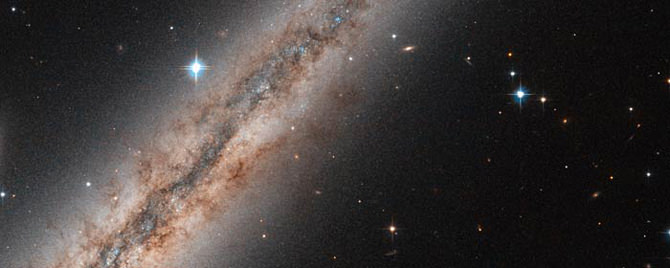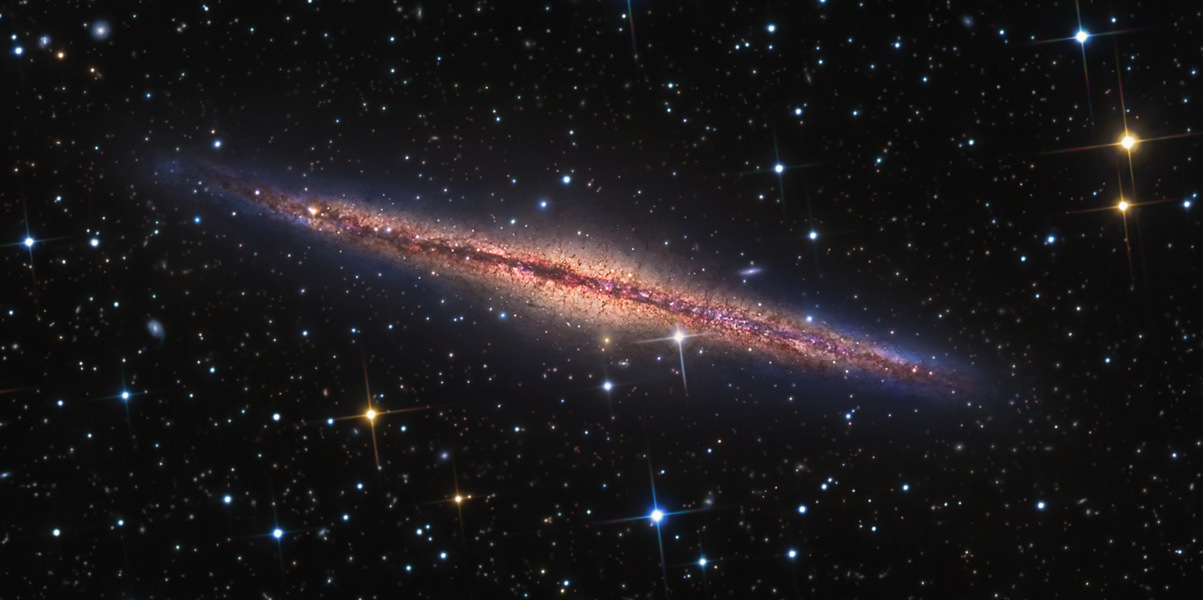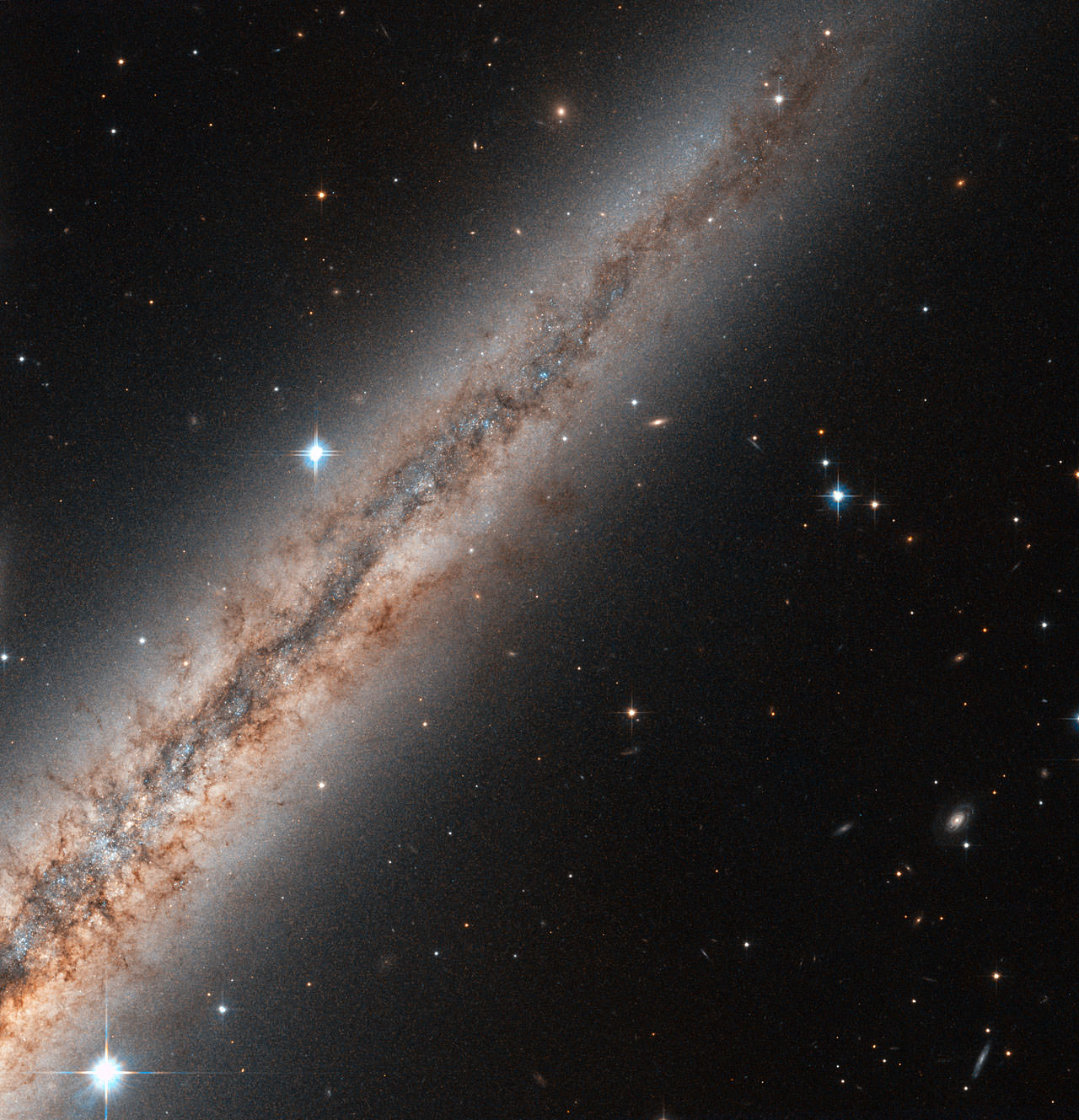Host: Fraser Cain & Scott Lewis
Astronomers: David Dickinson, Gary Gonella, Mark Behrendt, Roy Salisbury, Stuart Forman
Continue reading “Virtual Star Party – March 16, 2014”
Can You Find a Hubble Hidden Treasure?

[/caption]
Just look at the kind of stunning images that are buried in the archives from the Hubble Space Telescope! Here, Hubble turned its powerful wide field Advanced Camera for Surveys towards this spiral galaxy and took this close-up of its northern half. The entire galaxy, called NGC 891, stretches across 100,000 light-years and we see it exactly edge-on. Visible are filaments of dust and gas escaping the plane of the galaxy. A few foreground stars from the Milky Way shine brightly in the image, while distant elliptical galaxies can be seen in the lower right of the image.
This is just an example of the hidden gems in Hubble’s archives that have never been seen by the general public. There’s a new contest to find more — so how can you participate?
The HST has made over one million observations during its more than two decades in orbit. New images are published nearly every week, but hidden in Hubble’s huge data archives are some truly breathtaking images that have never been seen. They’re called Hubble’s Hidden Treasures, and between now and May 31, 2012, ESA invites you to help bring them to light. Just explore the Hubble Legacy Archive (HLA), and dig out a great dataset, adjust the contrast and colors using the simple online tools, and submit to the Hubble’s Hidden Treasures Contest Flickr group. For more information about the competition, visit the Hubble’s Hidden Treasures webpage.
The European Southern Observatory (ESO) also conducted a similar ‘treasure hunt’ with great results
This image was found by contestant Nick Rose.
A Sword of Stars
[/caption]
Like the blade of a magical weapon from a fantasy tale, the northern edge of spiral galaxy NGC 891 is captured by the Hubble Space Telescope, glowing with the light of billions of stars and interwoven with dark clouds of dust and cold gas.
In reality this cosmic blade is enormous. About the same size as our galaxy, NGC 891 is approximately 100,000 light-years in diameter, making the section visible here around 40,000 light-years in length.
Unlike the Milky Way, however, NGC 891 is unbarred and also exhibits many more filaments of dark gas and dust. Astronomers suggest that these are the result of star formation and supernovae, both of which can expel vast amounts of interstellar material far out into space.
The few bright stars in the foreground are located in our own galaxy.
NGC 891 is located in the constellation Andromeda and lies about 30 million light-years away… that means the light captured by Hubble’s Advanced Camera for Surveys to create the image above began its journey 35 million years after the asteroid impact that led to the extinction of the dinosaurs, and about 26 million years before our ancient African ancestors began walking upright. That may sound like a long trip but, as Douglas Adams so eloquently said, “that’s just peanuts to space!”
Read more on the Hubble site here.
Image credit: ESA/Hubble and NASA
Astrophoto: Deep, Deep Look at NGC 891

[/caption]
This image is a “first light” for noted amateur astronomer R. Jay GaBany’s new observatory, and it might be the deepest, most detailed view of the iconic edge-on spiral galaxy NCG 891. This first photograph from his new observatory in California includes almost 35 hours of exposure time! “As a result, hundreds of small, much more distant galaxies can be seen in the image as well as very small scale structures across the galaxy’s edge,” Jay wrote us. If you go to Jay’s website, Cosmotography.com, you can see larger versions where you can see very faint dust clouds, called cirrus, that have never been imaged within NGC 891 at this scale.
“Last fall, I moved my remote observatory from the south central mountains of New Mexico, where I have been taking pictures for the past five years,” Jay said, “to high in the Sierra Nevada Mountains, between Yosemite and King’s Canyon National Parks, in the east central part of California….For me, the first picture included many test exposures taken to insure my instruments were functioning correctly. As a result, I chose a familiar subject so I could spot problems quickly. Luckily, I had very few challenges and my new remote observatory is now operating both smoothly and reliably!”
NGC 891 is located in the northern constellation of Andromeda. It’s easily visible with a small telescope this time of year and is a favorite subject for astrophotographers. “However, no image of this galaxy (to my knowledge) has gone as deep as this picture,” Jay said.
Also, Universe Today would like to send our congratulations to Jay for being recognized by the American Astronomical Society (AAS) and Sky & Telescope Magazine, as he was awarded the Chambliss Amateur Achievement Award for his work with Dr. David Delgado and his team of professional astronomers! The award is given annually to an amateur astronomer from North America who makes outstanding contributions to scientific research.
Jay was cited as being one of the world’s leading amateur astrophotographers for the past decade, “who has single-handedly, through his dedicated and careful work, spawned a new research direction in the exploration of galaxy evolution via low-surface-brightness imaging of galaxy halo substructure,” the AAS press release said. “GaBany has devoted hundreds of hours working with professional astronomers to make deep images that reveal faint tidal streams and rings in the outer halos of galaxies, indicative of recent and ongoing galaxy interactions with dwarf satellites, supporting studies of galaxy formation.”
Congrats Jay!

